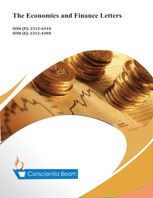The incentives of international mobility, recognition of foreign society and culture through trade and international aid
DOI:
https://doi.org/10.18488/29.v11i1.3668Abstract
This research provides empirical evidence of the influence of trade and international aid on migration. Using data on Japanese trading with African countries and the international aid provided by the Japanese government to African countries, the regression results show that higher trade and international aid both increase the attractiveness of Japanese society and attract more migrants from African countries to settle down in Japan. The phenomenon is significant after splitting the migrants into students and employees. Furthermore, the effects of trade and international aid are compared using quantile regressions. International aid better explains migration behavior when the number of migrants from the country is low, but trade better explains migration behavior when the number of migrants from the country is high. Such differences contribute to the literature by showing the recognition mechanism differences under different levels of social networks and foreign connections on a personal level. More people moving to Japan could lead other local residents to follow, making the social network effect stronger and individuals more connected to Japan. In such a case, the economic indicator, trade, could better explain the motivation of migration behavior. This finding could help the Japanese government develop better policies to attract highly-skilled employees and potential students to settle in Japan to alleviate the Japanese aged society problem.

